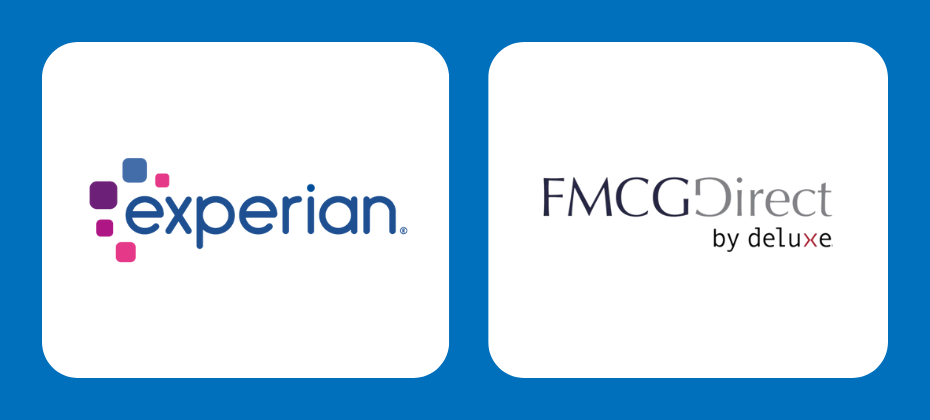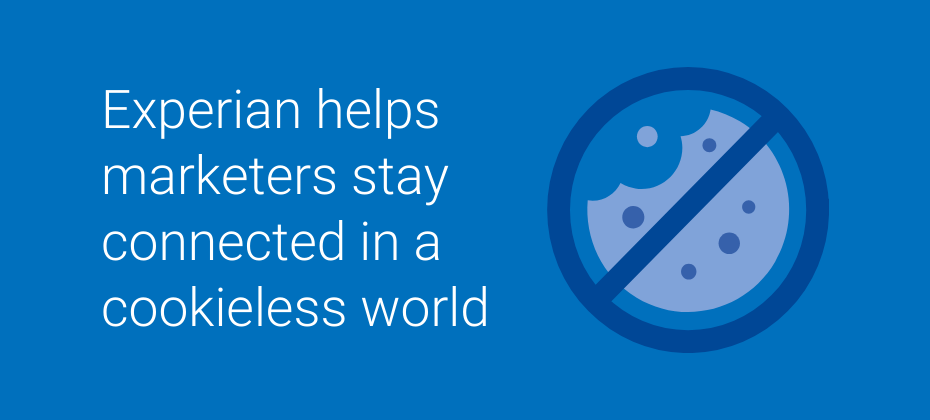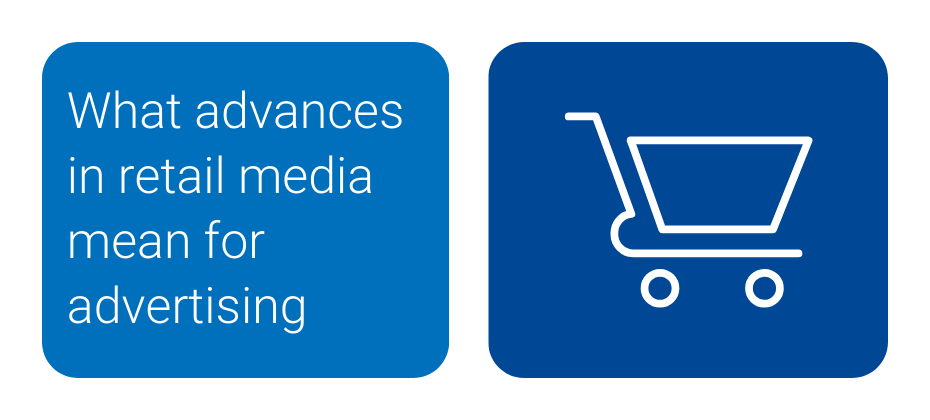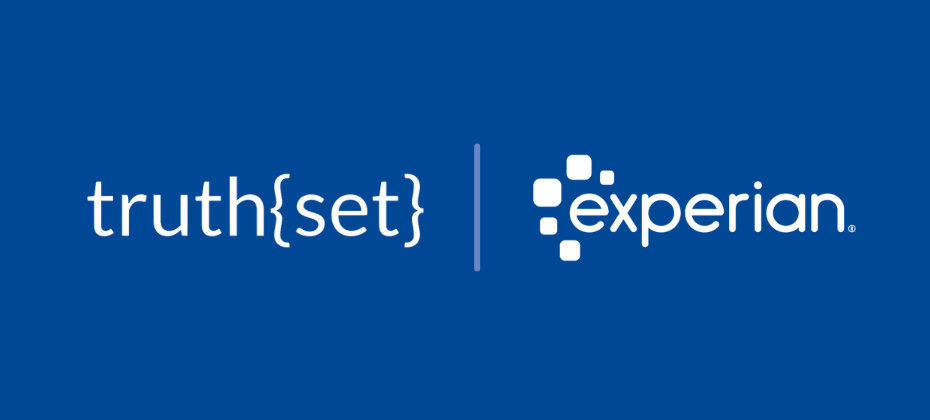Marketing data and identity
The latest on how brands, agencies, and media buyers are using data and identity to better understand audiences, improve targeting, and drive performance across channels.

Retail media networks (RMNs) rank among the fastest-growing media channels. According to eMarketer, retail media spend is forecasted to account for more than a fifth of overall digital spending in 2025, and retail media spend will grow by 21.8%. For RMNs, the path to realizing this opportunity is marked by navigating through a series of critical stages, each with its own set of challenges and solutions. Retail media strategies Simply put, RMNs need to know who their customers are, where they are, and how to reach them to succeed. But we know nothing is that simple. This blog post reviews the three pivotal stages of RMN success, offering a roadmap for networks aiming to optimize their operations and claim their share of the rapidly growing category. Stage 1: Develop a data foundation In a world where traditional tracking methods are fading, first-party data has become essential for targeted advertising. Retailers have a wealth of this valuable data due to their direct consumer relationships. The initial step in establishing an RMN is to organize and utilize this data effectively. Steps to develop a data foundation: Organize data: Bring together fragmented shopper data, loyalty program information, and other customer data into a unified location. Clean and deduplicate this data to create consistent customer profiles. Enhance profiles: Gain insights into your customers and your brand’s customers so you can learn who your best, lapsed, and non-customers are. Append additional attributes to your shopper data, including media consumption habits, lifestyle preferences, demographic information, and more. Use identity graphs: Identity providers, like Experian, enable you to learn about the anonymous – and known - visitors on your platform and organize disparate customer data points into households. This will allow RMNs to connect addressable identifiers to the household, making it easier to reach customers across channels. Create audience segments: With a solid data foundation, RMNs can build audience segments beyond basic shopper data. These segments will make your data more attractive and actionable for media buyers. For example, consider a retailer that knows its shoppers are primarily young professionals, but a CPG brand wants to target not only these shoppers but also young professionals who are parents. By partnering with an identity solution provider like Experian, the retailer can append additional data to identify and target the young parents within their existing customer base, enabling the CPG brand to reach both audience segments effectively. “Retail media networks thrive on clean, accurate, and actionable data. Simply put, it's crucial to know who your customers are, when they're most engaged, and where to reach them to drive effective marketing strategies and maximize ROI.”anne passon, sr. director, sales, retail Stage 2: Become a publisher for optimal retail media growth The next step for RMNs is to transition from building a data foundation to helping marketers reach their target audience, essentially becoming a publisher. This involves two main processes: organizing advertising inventory and connecting it to demand. Steps to become a publisher: Audit and organize inventory: Conduct a thorough review of all existing ad spaces, including websites, apps, and in-store placements. Identify gaps and consider creating new advertising opportunities, such as website and app features, interactive digital experiences, or expanded in-store touchpoints. Connect inventory to demand: Integrate the organized inventory with platforms, allowing advertisers to access it easily. This often involves using supply-side platforms (SSPs) and demand-side platforms (DSPs). Continuing with our example, the CPG brand can work with its DSP or SSP partners and easily access your ad inventory, and effectively target the young professional and young parent audience segments. Stage 3: Scale inventory for retail media growth As RMNs progress to the final stage of their success journey, they may face the challenge of limited inventory within their owned and operated (O&O) channels. To meet marketers' expansive reach requirements and to continue to drive growth and profitability for their organizations, RMNs must expand their inventory beyond O&O. Steps to scale inventory: Utilize data collaboration tools: Clean rooms allow secure merging and enrichment of data from various sources, creating richer audience profiles while maintaining privacy. Resolve identity and enhance addressability: Identity graphs help resolve known customer identifiers (e.g. emails) into addressable IDs (e.g. mobile IDs and connected TV IDs), which can be used to reach customers across all the platforms they consume media. Expand audience reach: Onboarders, like Experian, help extend data and audiences to programmatic destinations beyond a retailer's O&O inventory. By mapping audiences to digital identifiers maintained by identity partners, RMNs can significantly widen their reach, meeting advertisers' needs for engaging with broader and more diverse audience segments. The CPG brand can now reach young professionals and young parents on the retailer’s platform and in all the other places where they consume media, like watching their favorite shows on connected TV (CTV) or browsing the web on their phones. Measurement across stages for retail media growth Measurement is crucial and must be conducted during and after a campaign to understand and validate performance. Here are two types of measurement to consider: Cross-device campaign measurement: Measure performance by connecting an ad exposure in one environment (e.g. CTV) to an action in another (e.g. mobile purchase). This holistic, cross-device approach requires a partner for identity resolution as it will ensure that the impact of a campaign is fully understood. Aggregate performance analysis: Understand performance in aggregate across several campaign studies. Receive independent third-party measurement validation that you can promote to advertisers to drive increased spend. For our CPG brand, these measurement reports ensure that they can track the performance of their campaigns from the initial exposure on a CTV to the final purchase made on a mobile device, providing comprehensive insights and validation of their advertising strategy. The retailer can aggregate these studies and promote their network’s effectiveness to prospective advertisers. Accelerate retail media growth with strategic partnerships The journey through the stages of RMN success is riddled with deep technical challenges that are often beyond the institutional capabilities of non-media businesses. The intricacies of data management, audience insights, identity resolution, precise cross-device targeting, and measurement require specialized expertise and technologies that may not be readily available in-house. RMNs stand to benefit from forging strategic partnerships with companies that possess not only the necessary technological tools but also a profound understanding of the media landscape. The steps outlined here will accelerate your growth and ensure you capitalize on the opportunity in front of you. Connect with a member of our team to learn how we can support your journey toward RMN success. Contact us to enhance your retail media strategies Latest posts

Marketing success can sometimes come in the most unlikely of combinations — reminiscent of a great chef crafting a delicious dish from ingredients rarely used together. In advertising, this type of outside-the-box thinking can give you a competitive advantage over peers who are operating within the normal limits. In this blog post, we will explore how both financial and non-financial advertisers can use consumer financial marketing data in their ad campaigns to connect with the right consumers. This type of strategic thinking will make campaigns more effective, resonate more deeply with audiences, and turn your chicken into coq au vin. Background on Financial Audiences FMCG Direct, a Deluxe company, in partnership with Experian, has developed financial audiences that deeply understand consumer financial behavior. These audiences are not just static lists of potential customers but are constantly updated to provide a multi-dimensional view of consumer financial habits, including investing, borrowing, credit card preferences, and more. Central to this effort are Consumer Financial Insights®, Financial Personalities® and ConsumerSpend® models. These tools are built utilizing a combination of FMCG Direct, a Deluxe company in-depth consumer research, sophisticated clustering techniques, and Experian's extensive consumer marketing data. FMCG Direct, a Deluxe company financial audience segments The Financial Personalities® segments categorize consumers based on their financial behaviors and preferences, dividing them into distinct categories such as insurance, credit card usage, and investment habits. This allows for a targeted approach considering each consumer's unique financial behavior and potential needs. Meanwhile, Consumer Financial Insights® segments offer a detailed and tiered view of a consumer's economic status, including insights into household deposits, investable assets, net assets, and the likelihood of mortgage refinancing, all categorized into specific tiers to reflect varying levels of wealth and investment. Lastly, ConsumerSpend® segments provide a look at how and where a household allocates their disposable income. Broken up by nine unique categories, marketers can better understand where people are spending their money each year. These predictive segments are built through extensive research, surveying over 25,000 consumer households across the United States. Each household's financial profile encompasses a wide array of data points, such as total household assets, deposit balances, and investable assets. The result? A granular understanding of consumer financial behaviors, which marketers can use to tailor their financial services offerings. However, the potential applications of these insights extend far beyond the confines of financial products and services. Here are some ideas to help you get started. Advertising campaigns for travel and leisure Launch campaigns that precisely cater to different consumer segments' unique financial personalities and spending behaviors. Credit Card Financial Personality: Launch digital ads for luxury travel experiences tailored to consumers known for extensive credit card usage in travel, capitalizing on their affinity for high-end leisure activities. Deposits (Bank) Financial Personality: Implement advertising campaigns for budget-friendly travel options tailored to consumers with modest bank deposits and prudent spending habits. These ads could highlight affordable vacation packages, discount travel deals, and value travel bundles, catering to those prioritizing cost efficiency and practical travel solutions. Ideas focusing on home improvement and decor Craft advertising campaigns aimed at audiences with modest net worth, using insights into their financial profiles to promote accessible and essential products and services. Net Asset Score (Lower Tiers): Develop ad campaigns for cost-effective home improvement services and budget-friendly home appliance options, targeting consumers whose net asset scores indicate more modest financial resources. These ads should highlight the products' durability and energy efficiency, appealing to the consumers' need for long-term savings. Discretionary Spend – Home Furnishing: Design ad campaigns for upscale home furnishing collections, targeting audiences with significant discretionary spending power. These ads should spotlight your home furnishings' premium quality, sophisticated design, and superior craftsmanship, appealing to consumers' tastes for luxury and exclusivity. Campaigns for consumers in entertainment Execute targeted advertising campaigns designed for consumers with high disposable income, utilizing insights from their net asset and investable asset scores. Net Asset Score (Higher Tiers): Launch advertising campaigns for premium entertainment experiences, including exclusive concert seats, backstage passes, and custom festival packages. Target consumers whose net asset scores suggest significant disposable income to ensure your promotions reach the most likely attendees. Discretionary Spend — Entertainment: Design advertising campaigns for high-profile music and entertainment events, focusing on individuals known for their significant expenditures on entertainment. Create promotions that resonate with their lifestyle, emphasizing the connection between a vibrant social life and exclusive entertainment opportunities. As you can see by understanding and utilizing the nuances of financial data, advertisers can create highly targeted, relevant, and effective campaigns across various sectors. This approach exemplifies the innovative spirit of audience usage, proving that with a bit of creativity, data applications are as limitless as our imagination. Financial Personalities and Consumer Financial Insight audiences and their in-platform names Find these syndicated audiences in your demand and supply-side platform of choice. Insurance financial personality - Audiences to help understand a consumer's behavior and confidence in their ability to find the right life insurance. Financial Personalities > Insurance Financial Personality Credit card personality – Used to identify consumers based on their credit card usage and behaviors. Financial Personalities > Credit Card Financial Personality Deposits financial personality – These audiences include consumers who are likely to look for bank offers based on their spending behaviors. Financial Personalities > Deposits Financial Personality Investments financial personality – Audiences to help understand a consumer’s comfort and behaviors with making financial investments. Financial Personalities > Investments Financial Personality Home equity financial personality – Audiences to help understand a consumer’s home equity circumstances and behaviors. Financial Personalities > Home Equity Financial Personality Mortgage financial personality – Audiences to help understand a consumer’s behavior and preferences with mortgages. Financial Personalities > Mortgage Financial Personality Investable assets (FLA/Fair Lending Friendly)* – Audiences that include consumers who have available investable assets in seven total tiers with Tier 1 being the highest, and Tier 7 being the lowest. Consumer Financial Insights > Investable Assets Net asset score (FLA/Fair Lending Friendly) – Predict a consumers likely net asset score ranging from less than $25,000 to over $5,000,000. Consumer Financial Insights > Net Assets Score (Net Worth) Discretionary spend – Predicts the annual discretionary spend for the category listed in the audience.Consumer Financial Insights > Discretionary Spend – Travel Consumer Financial Insights > Discretionary Spend – Jewelry Consumer Financial Insights > Discretionary Spend – Home Furnishings Consumer Financial Insights > Discretionary Spend – Entertainment Consumer Financial Insights > Discretionary Spend – Electronics Consumer Financial Insights > Discretionary Spend – Education Consumer Financial Insights > Discretionary Spend – Donations Consumer Financial Insights > Discretionary Spend – Dining Out Consumer Financial Insights > Discretionary Spend – Total Consumer Financial Insights > Discretionary Spend – Clothing/Apparel Household deposits/balances (FLA/Fair Lending Friendly) – Audiences that include households that have bank deposits balance in six total tiers with Tier 1 being the highest, and Tier 6 being the lowest. Consumer Financial Insights > Household Deposits/Balances Investment Balances (FLA/ Fair Lending Friendly) – Audiences that include consumers who have an investment balance in six total tiers with Tier 1 being the highest, and Tier 6 being the lowest. Consumer Financial Insights > Investment Balances Mortgage refinance (FLA/Fair Lending Friendly) – Predicts the likelihood the consumer is to refinance their mortgage. Consumer Financial Insights > Mortgage Refinance Contact us Footnote * “Fair Lending Friendly” indicates data fields that Experian has made available without use of certain demographic attributes that may increase the likelihood of discriminatory practices prohibited by the Fair Housing Act (“FHA”) and Equal Credit Opportunity Act (“ECOA”). These excluded attributes include, but may not be limited to, race, color, religion, national origin, sex, marital status, age, disability, handicap, family status, ancestry, sexual orientation, unfavorable military discharge, and gender. Experian’s provision of Fair Lending Friendly indicators does not constitute legal advice or otherwise assures your compliance with the FHA, ECOA, or any other applicable laws. Clients should seek legal advice with respect to your use of data in connection with lending decisions or application and compliance with applicable laws. Latest posts

With the impending deprecation of third-party cookies, marketers find themselves at the crossroads of innovation and adaptation. As we bid farewell to this identifier, the emphasis shifts to forging deeper connections, understanding customer needs, and navigating the marketing landscape with data-driven precision. At Experian, we stand as your trusted partner, committed to guiding you through this transition. In this blog post, we'll explore: How third-party cookie deprecation is impacting digital advertising Six alternatives to third-party cookies and where they fall short How Experian can help you navigate a cookieless world Four ways third-party cookie deprecation is impacting digital advertising Third-party cookie deprecation is causing significant challenges within the AdTech industry, manifesting in four key areas: Reach: Advertisers and demand-side platforms (DSPs) will face difficulties in reaching their target customers due to the absence of third-party cookies. Understanding audiences: Advertisers will find it challenging to understand the demographics and behaviors of their customer base without third-party cookies. Similarly, publishers are struggling to identify their audiences accurately, resulting in less addressable and appealing inventory. Measurement: Measurement providers may encounter obstacles in accurately assessing the effectiveness of advertising campaigns. Additionally, DSPs are finding it hard to measure the impact of their ads without the assistance of third-party cookies. Matching: Data providers may experience challenges in matching users with the appropriate audience segments, leading to difficulties in delivering targeted advertising. Six alternatives to third-party cookies As the deadline approaches for Google's removal of third-party cookies from Chrome by the end of 2024, marketers are scrambling to discover alternative methods for delivering effective advertising. Fortunately, various alternatives are emerging. However, the abundance of options can create confusion rather than clarity. Which alternatives are worth considering? Here are six compelling alternatives to third-party cookies: 1. First-party data Acquiring consented first-party data directly from users is becoming increasingly vital as it can lay the groundwork for more precise targeting. 2. Universal IDs Alternative identifiers like The Trade Desk's UID2 and ID5’s Universal ID are becoming increasingly important, offering the ability to maintain a comprehensive consumer view across channels and platforms, leading to enhanced personalization and addressability across various channels, even in cookieless environments. 3. Identity graphs As browser-based IDs shift and digital signals decline, the need for an identity graph grows, with companies adopting a "graph-of-graph" strategy by combining their own robust first-party data with licensed identity graphs, as highlighted in recent announcements by industry giants such as Disney, VideoAmp, and Magnite. 4. Contextual targeting Contextual targeting aligns publisher content with relevant ads, ensuring ad delivery based on content rather than individual identifiers. This privacy-respecting approach is less dependent on third-party cookies, providing effective audience activation. 5. Data collaboration In a cookieless world, it becomes more difficult for companies to "communicate" with one another. We expect to see more pick up of data collaboration in the market, using addressable IDs and identity resolution to power connectivity between partners and their data sets. 6. Google Privacy Sandbox The primary goal of Google’s Privacy Sandbox is to continue to deliver valuable consumer information that yields relevant marketing and media strategies, while protecting a user’s privacy. How these alternatives to cookies fall short While it's promising to see numerous alternatives to cookies emerging, it's essential to recognize that each alternative has its limitations and is not a perfect one-to-one replacement for third-party cookies. Let’s review the shortcomings of these alternatives, and then we’ll walk through how Experian can help you navigate these alternatives to cookies. 1. First-party data First-party data, which is data directly collected from your users with their consent, is highly valuable. However, you will likely face limitations in terms of the number of consumers in your database, the identifiers linking them, and the insights into their demographics and behaviors. To overcome these limitations, it's essential to expand both the quantity and quality of your first-party data. 2. Universal IDs Universal identifiers are valuable for tracking users across different devices and websites. However, no single universal identifier has enough reach to fully replace third-party cookies. Universal IDs are most effective in terms of scaling, when they are combined with other universal identifiers or alternative addressable identifiers. 3. Identity graph Identity graphs excel at connecting digital audiences. However, establishing an identity graph from scratch is a significant accomplishment, demanding expertise, financial resources, and more. 4. Contextual targeting Contextual targeting and advertising aim to place your ads next to relevant content. However, there's a risk that your ads might appear alongside misaligned content, reaching audiences who are uninterested or unintended. 5. Data collaboration Data collaboration is beneficial for enhancing your consumer data and informing your strategies. However, it can introduce potential data security risks, if not done in the right framework, and may lead to subpar matching results due to issues like data hygiene or discrepancies in identifiers. 6. Google Privacy Sandbox Google’s Privacy Sandbox aims to balance effective advertising with consumer privacy and data security. However, it lacks transparency and has yet to prove its effectiveness, raising concerns about whether it meets industry standards. How Experian can help you navigate a cookieless world As an industry innovator and leader in data and identity, we've developed solutions to address the challenges posed by the shift away from third-party cookies. Our products are designed to adapt to these changes and ensure your success. We've anticipated industry shifts and proactively prepared our offerings to support you through this transition. Below we outline how our products are ready to support you through the transition away from third-party cookies. Graph The Experian Graph facilitates connectivity without relying on cookies. Our Graph helps ensure connectivity by supporting a variety of addressable identifiers, not limited to but including universal IDs, like Unified ID 2.0 (UID2) and ID5's universal ID. Whether you have first-party data or not, our Graph can be used to expand the reach of your first-party data or provide you with access to the full scope of our Graph's 126 million households and 250 million individuals. Activity Feed Supported by our Graph, Activity Feed can help you deliver digital connectivity and resolution in a cookieless environment. Activity Feed can resolve disparate activity to a single, consumer profile. It can expand the quantity of addressable identifiers associated with your first-party consumers. Additionally, Activity Feed, by joining disparate activity and identifiers, provides clearer insights, more addressable targets, and more holistic measurement. Our Marketing Attributes and Audiences In a cookieless environment, our Marketing Attributes and Audiences provide valuable information and insights about who your consumers are, like their demographics, shopping patterns, and more, to facilitate more informed decision-making. You can use our Marketing Attributes and Audiences to enrich your first-party data, giving you crucial insights into your customers so you can make informed, strategic decisions. They can be matched to universal identifiers, expanding their utility. Additionally, our Marketing Attributes and Audiences are sourced from non-cookie dependent offline and digital sources, ensuring they are unimpacted by third-party cookie deprecation. Collaboration While third-party cookies have primarily served to connect data in the industry, many companies are turning to data collaboration in lieu of having third-party cookies. In doing so, they can connect data with key partners, which they can use to make better media decisions. Experian Collaboration helps make data collaborations better, powering higher match rates by using the various identifiers supported in our offline and digital graphs. Through our current support of collaboration in three environments, within Experian, through crosswalks, and in clean rooms, such as AWS, InfoSum, and Snowflake, we ensure that you only share the data you intend to share, while the sensitive information remains secure. This way, your partner and you can focus on how to use the data to benefit you and not on anything else. Get started with alternatives to third-party cookies today While many view the deprecation of third-party cookies as disruptive, we see it as an opportunity for the industry to embrace a new era of advertising while prioritizing consumer privacy. Achieving this balance is crucial, and Experian's solutions are here to help you navigate it effectively. As the AdTech industry gravitates toward a few tactics to effectively advertise in the cookieless future, Experian is here to understand your core needs and recommend products that will help. In a rapidly evolving marketing landscape, Experian stands as your trusted partner, offering expertise in data-driven and identity solutions. Connect with our team to seamlessly transition into these alternatives to third-party cookies, ensuring your marketing strategies remain effective, privacy-compliant, and focused on meaningful connections. Get started today Latest posts

Explore the impact of cookie deprecation on digital marketing and learn strategies to adapt using ethical data practices and first-party data.

Dive into the retail media landscape. Explore Amazon's dominance, Walmart's innovations, and the future trends shaping advertising strategies.

Experian continues to lead in data accuracy according to Truthset's latest analysis.

Programmatic TV can be an inexpensive option if you know where to look. Some platforms can offer a discounted path to prime-time ad spots on major networks.

2023 has been an unprecedented year for AdTech. With new challenges arising every day — from ongoing signal loss to changing consumer privacy regulations– staying on top of trends is more important than ever before. To help you stay informed on successful tactics from across our ecosystem we’ve compiled a list of our top five 2023 AdTech blog posts. Keep reading to learn about the top themes from CES and Cannes this year, why contextual targeting is so popular, and more - so you can remain competitive in today's rapidly changing environment. #5 CES 2023: Clean rooms, activation, and more Experian attended CES in January to kick off the AdTech year, connecting with partners, clients, and industry leaders to understand their challenges and goals. Discussions were focused on clean rooms and digital activation to address data deprecation and consumer privacy. Clean rooms have the potential to standardize data and address interoperability issues. Digital activation was predicted to increase significantly in 2023, with more focus on demand-side, video, and supply-side platforms. Did digital activation increase in 2023? Download our 2024 Digital audience trends and predictions report to find out. Read our full 2023 CES recap here. #4 Experian identity resolution now available in AWS Clean Rooms Earlier this year, Experian announced that our identity resolution solution is now available in AWS Clean Rooms. Through this new partnership, customers can pair Experian's identity capabilities with AWS Clean Rooms to safely collaborate and access deeper insights without exposing sensitive data. Check out the full announcement to hear from Kalyani Koppisetti, Principal Partner Solution Architect at AWS, Matt Miller, Business Development Principal at AWS, and Tyler Middleton, Sr. Partner Marketing Manager at Experian. #3 Four key themes from Cannes Lions 2023 At Cannes Lions 2023, discussions revolved around four main themes: Signal loss: Experts discussed the importance of adapting paid media strategies to align with consumer behaviors. Collaboration: Discussions highlighted the need for industry players to collaborate and focus on solutions that benefit all stakeholders in the ecosystem. Personalization: This was a key topic and emphasized the growing significance of tailored content, data-driven insights, and first-party data solutions for advertisers adapting to cookie deprecation and the evolving consumer privacy landscape. Balancing AI and creativity: Attendees explored how to balance AI capabilities and nurture creativity while maintaining a human touch. Cannes 2024 will be here before we know it and Experian will be there. To get ready, check out this post by Tyler Middleton, Sr. Partner Marketing Manager, to hear from a first-time Cannes attendee, #2 Three key insights from our 2023 Holiday spending report Experian's annual Holiday spending trends and insights report analyzed recent trends, consumer spending habits, and anticipated what was to come in the 2023 holiday shopping season. This blog post covered three key insights from our report: Consumers are starting their holiday shopping earlier, particularly with online sales. Online sales have been increasing year-over-year, surpassing in-store sales. Spending during the 2022 holiday season was lower than in previous years but is expected to be on par with what was seen in 2023. For advice from our experts and access to all of our predictions for this year’s holiday shopping season, download our 2023 Holiday spending trends and insights report today. #1 How contextual ad targeting addresses signal loss Our most viewed blog post of 2023 was How contextual ad targeting addresses signal loss. Marketers are seeking new solutions due to signal loss caused by the phasing out of third-party cookies. Contextual ad targeting offers a way to combine contextual signals with machine learning for more accurate targeting. Experian's Jason Andersen and Yieldmo's Alex Johnston discuss the challenges of signal loss, addressability, the importance of good creative, and tips for digital ad success in this blog post. By understanding contextual advertising, marketers can create powerful and effective campaigns to reach target audiences. Subscribe to our newsletter Sign up for our email newsletter to receive our latest blog posts, product and partnership announcements, thought leadership, and more straight to your inbox. Subscribe Contact us today Latest posts

The AdTech industry is buzzing with discussions about cookie deprecation and effective strategies to tackle it. One of the commonly suggested solutions is the utilization of clean rooms alongside responsibly sourced first-party data. Above all else, the industry recognizes the importance of respecting consumer data and complying with all privacy laws. Additionally, the industry acknowledges the need for a change in our historical practices. This shift benefits everyone involved, as consumer data is more secure than ever. Tremendous investments have been made to ensure the utmost security of consumer information. Clean rooms are one of the tools that enable companies to use data securely, ensuring the content that you see is as relevant as possible. Two ways the AdTech industry is addressing cookie deprecation The days of sending data directly to partners for usage or for using only third-party data for marketing efforts are gone. Now, the emphasis is on responsibly collecting first-party data and using clean rooms to enrich first-party data to enhance marketing efforts. First-party data The industry is starting to lean into first-party data gained through transparent means. This valuable information provides organizations with deeper insights into their customers, allowing for more personalized and effective interactions. By embracing the power of first-party data, either on its own or enriched via partner collaboration, you can cultivate stronger relationships, build trust, and deliver tailored experiences that resonate with your customers on a deeper level. Clean rooms Many data lakes and warehouses offer this service, ensuring their clients can not only store their data with them but can connect it with other partners in a secure environment and extract more information through the combined data sets versus their data on its own. Brands and their partners recognize that they need to work together, and a clean room provides a secure environment to share their first-party data without exposing their sensitive data to their partner. So, while we're losing third-party cookies, brands and partners can still get value from first-party data by using a clean room to generate audience insights, segmentation strategies, personalized experiences and offers, media plans, and measurement and attribution. Three ways data clean rooms can improve Data clean rooms are a great way to facilitate data collaboration while ensuring sensitive data is not exposed. Data clean rooms are not yet easy to use nor are they inexpensive. They require investment, both financially and resource allocation-wise, and you are not guaranteed to yield great match results. Let’s dive into three areas for data clean room improvement. High cost According to the IAB's State of Data 2023, nearly two-thirds of data clean room users spent at least $200K on the technology in 2022. In addition, one-third of data clean room users expect the price of data clean rooms to rise in 2023. The high cost of this solution can make it inaccessible to smaller companies in the advertising space. Resource intensive Nearly half of the companies using data clean rooms have a team of six or more dedicated to the technology, according to the IAB’s State of Data 2023, while nearly a third of companies using data clean rooms have 11 or more employees focused on the technology. Data clean rooms are not turnkey solutions. Inefficient matching Even if companies are using clean rooms does not mean that they are automatically going to achieve great success. Identity fragmentation, data hygiene, and differing identifiers can suppress client match rates in clean rooms, leading to significant investment and a lackluster output. How to get the most return on your clean room investment The finish line for data collaboration in clean rooms is not just having a relationship with a clean room. Instead, you should incorporate an identity resolution solution in your clean room. By adding an identity solution to your clean room, you can: Resolve and match all your identity data, regardless of the identity data that you or your partner have, giving you a larger data foundation to analyze. Generate more valuable insights and information, leading to a better experience for your customers. Join data sets to create smarter activation and targeting strategies and produce more holistic measurement. Experian can help you get started with identity resolution and data clean rooms If you are investing in data clean rooms, that means you are committed to the best in data practices. Experian recommends going the extra step and that you also invest in finding an identity resolution solution. By doing this, you can see better match rates. Experian offers this capability and has existing relationships with three clean room partners, Amazon Web Services, InfoSum, and Snowflake. In addition to collaborating in clean rooms, we offer collaboration in two other secure environments. Contact us today to discuss how we enable identity resolution in clean rooms or to chat about our other collaboration capabilities. Get in touch Latest posts